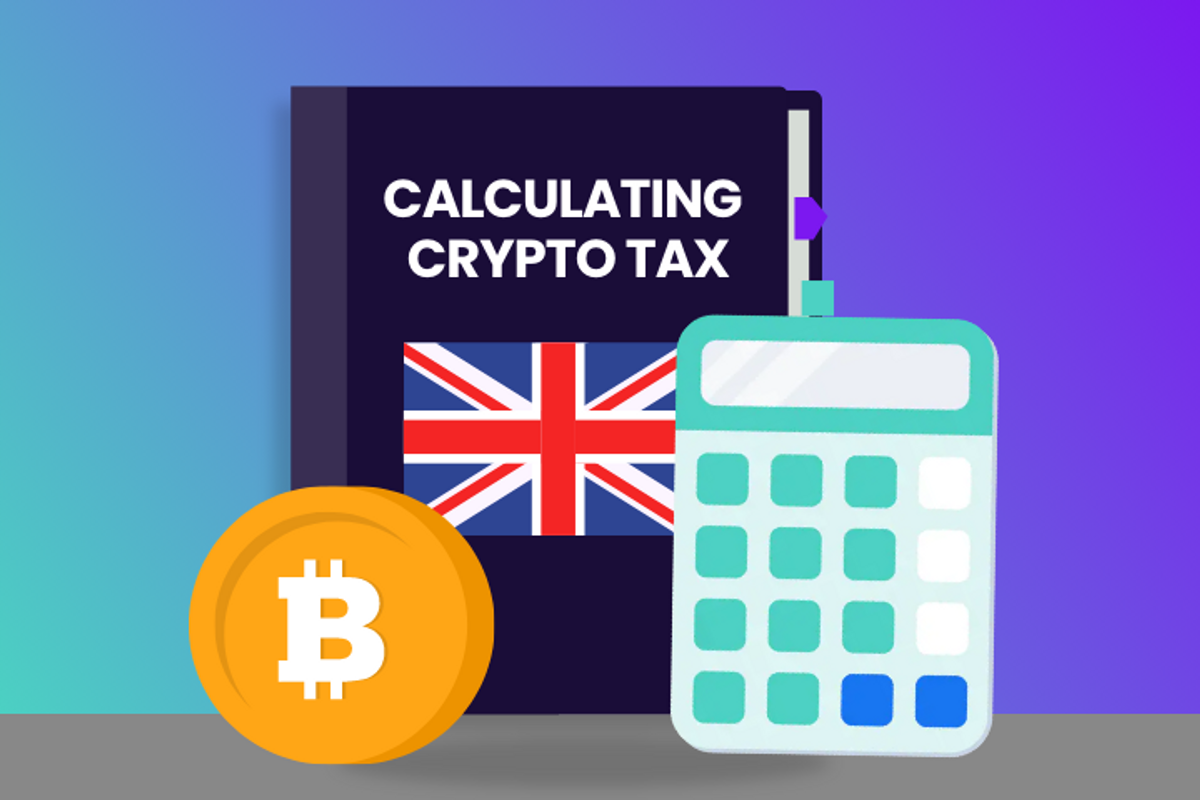
Crypto liquidity pools play a vital role in the decentralised finance (DeFi) ecosystem, providing the backbone for decentralised exchanges (DEXs), ensuring liquidity for various crypto assets and enabling traders to swap tokens efficiently. Participating in a liquidity pool comes with tax implications and understanding your tax obligations is essential.
To learn more about how cryptocurrency is taxed, check out our detailed UK cryptocurrency tax guide. Or, to quickly work out how much you owe, get started with our crypto tax calculator. In this article we help you navigate the complex DeFi rules, exploring how they might affect entering and exiting liquidity pools and your liquidity pool rewards in detail.
Disclaimer
This guide is intended as a generic informative piece. This is not accounting or tax advice that can be relied upon for any UK individual’s specific circumstances. Please speak to a qualified tax advisor about your specific circumstances before acting upon any of the information in this article.
What is a crypto liquidity pool?
A liquidity pool is a collection of cryptocurrency tokens locked in a smart contract, often used to facilitate trading on decentralised exchanges (DEXs). By contributing tokens to these pools, liquidity providers enable seamless token swaps, earning rewards in return. For example, in an ETH/USDT liquidity pool, providers deposit equal values of ETH and USDT. These deposits allow traders to exchange one token for the other directly within the pool, bypassing traditional order books.
Entering a liquidity pool
When you enter a liquidity pool:
- You contribute a pair of tokens (or sometimes a single token, depending on the pool design) to the liquidity pool. For example, in an Ethereum/USDT liquidity pool, you would provide both ETH and USDT in a specific ratio, typically 50:50 by value.
- In return for your contribution, you receive Liquidity Pool (LP) tokens, which represent your share of the pool. These LP tokens act as a claim on your deposited assets and any fees or rewards the pool generates.
Risks of entering a liquidity pool
- Impermanent loss, which occurs when the price ratio of the two tokens changes significantly compared to when you entered the pool.
- Smart contract vulnerabilities: The pool relies on the underlying protocol's smart contracts, which could have bugs or be exploited.
- Slippage and fees: Depending on the protocol, entering the pool may incur trading fees or slippage.
Exiting a liquidity pool
When you exit a liquidity pool:
- You return your LP tokens to the protocol. This effectively burns the LP tokens and withdraws your share of the underlying assets.
- You receive your portion of the pool's assets, which includes:
- The tokens you initially contributed (adjusted for price changes and fees).
- Any trading fees, rewards, or other incentives accumulated during your time in the pool.
Accounting for changes:
The amount of each token you withdraw may differ from what you deposited due to:
- Impermanent loss: If token prices have changed during your time in the pool, the value of your withdrawn assets may be less than if you had simply held the tokens individually.
- Market activity: High trading volumes in the pool can generate more fees, potentially offsetting impermanent loss.
Are liquidity pools taxable?
Yes, liquidity pools are taxable. HMRC’s guidelines classify crypto assets as property, meaning any transaction involving crypto potentially has tax implications. When working out your tax liability for liquidity pool activity you need to think about:
- Liquidity pool rewards: the tax treatment depends on whether rewards earned from the pool are income or capital in nature.
- Entry and exit of the pool: although they are not always taxable, these events are often overlooked. The key consideration is beneficial ownership of the tokens.
- Disposal of rewards: CGT applies as normal when any token received as a liquidity pool reward is later disposed of.
Based on HMRC's latest DeFi guidance we suggest a three step approach to working out the tax position:
- Is the reward income or capital?
- Is beneficial ownership transferred?
- Consider the tax treatment.
We touch on the tax considerations for liquidity pool activity below, but for more detail take a look at the DeFi section of our Technical Tax Guide.
Tax on liquidity pool rewards
The new HMRC DeFi guidance on lending and staking indicates that lending rewards (including those from liquidity pools) may not always be income rewards. It is necessary to consider if the nature of the rewards is capital or income. We lay out some general considerations for this in the table below based on HMRCs guiding principles.
| Capital | Income | |
|---|---|---|
| Return earned by providing a service to the borrower/DeFi lending platform | ✅ | |
| The return is… | realised from the capital growth in value of an asset owned by the lender/liquidity provider | paid to the lender/liquidity provider by the borrower/DeFi lending platform |
| At the time of agreement, the return is… | unknown/ speculative | known / agreed |
| Return is paid… | upon repayment of the principal a one-off payment | periodically throughout the period of lending |
| The period of lending | indefinite or long term | fixed or short term |
Income tax on liquidity pool earnings
Income rewards received in exchange for putting tokens into a liquidity pool will be taxable as miscellaneous income, subject to income tax. The taxable amount is the fair market value (FMV) of the rewards at the time they are received.
Financial trading in cryptoassets
Warning If the taxpayer is a ‘financial trader’ in cryptoassets these rewards may be treated as trading income rather than miscellaneous income.
Capital gains tax on liquidity pool earnings
If it’s decided the nature of the rewards is capital, they are subject to capital gains tax not income tax.
A capital gain is realised on the reward upon adding tokens into the liquidity pool (based on the estimated present value of the future capital reward). This is then reassessed upon receipt of the capital reward (usually on exit), based on the value of the reward when received. On entry of the liquidity pool, there is also an acquisition of a ‘Marren v Ingles right' to receive the future capital reward. The acquisition cost of this right is the estimated present value of the future capital reward.
On receipt of the capital reward (usually on exit from the liquidity pool), there is a disposal of the 'Marren v Ingles right' The disposal proceeds are the sterling market value of the capital reward tokens received. There is a capital gain where the estimation upon entry was too low, or a capital loss where it was too high
Capital gains tax on the disposal of liquidity pool rewards
When tokens received as liquidity pool rewards are later disposed of, there may be a capital gain or capital loss.
Capital gains should be calculated as normal by subtracting the acquisition cost from the disposal proceeds to find the change in value. The CGT acquisition cost is the sterling market value of the reward token at the date of receipt, but HMRC matching rules also need to be applied.
Find out more about calculating capital gains in this dedicated article on cryptocurrency capital gains.
The tax implications of entering and exiting liquidity pools
HMRC guidance confirms that the capital gains tax position of the principal tokens must be considered when adding or removing cryptoassets from a liquidity pool. Entering a liquidity pool involves depositing tokens into the pool in exchange for LP tokens, which represent your share of the pool. Exiting means redeeming your LP tokens to withdraw the underlying assets, adjusted for fees and price changes.
The tax treatment depends on whether beneficial ownership of the tokens changes. This can be complex to establish - refer to our Technical Crypto Tax Guide and consult a tax professional or legal expert for advice.
Tax treatment when beneficial ownership is not transferred
Entry of liquidity pool
Where there is no change in beneficial ownership when the tokens are added to the pool, there is no requirement to realise a capital gains tax disposal of the tokens added.
Exit of liquidity pool
Often two different types of cryptoasset tokens are added to a liquidity pool by the owner, but a different number of each type of token are withdrawn upon exit from the pool.
For example, 5 ETH and 10 LNK are put into the liquidity pool; yet 3 ETH and 15 LNK are withdrawn from the liquidity pool.
In the absence of HMRC guidance, the most logical tax treatment is that upon exit from the pool, there is a taxable disposal of 2 ETH and an acquisition of 5 LNK; the disposal proceeds being equal to the sterling value of 2 ETH and the acquisition cost being the sterling value of 5 LNK; both at the date of exit.
HMRC DeFi guidance
The new HMRC DeFi guidance on lending and staking does not cover liquidity pools in a situation where there is no transfer of beneficial ownership of the tokens added to the pool. We have written to HMRC to seek clarification, but we are awaiting a reply.
Tax treatment when beneficial ownership is transferred
If there is a transfer of beneficial ownership, the tax position varies depending on whether the liquidity pool rewards are income or capital in nature. The following stages of the yield generating activity need to be considered:
- Entry
- Exit
- Liquidation
- Receipt of income reward
We explain the tax position in detail in our technical tax guide for both income rewards and capital rewards but highly recommend seeking advice from a crypto specialist tax advisor for help navigating.
How to track your liquidity pool transactions for tax purposes
Accurate tracking of liquidity pool transactions is essential for tax compliance. Each entry, exit, and reward must be recorded with the FMV at the time of the transaction. This can quickly become overwhelming, especially for frequent liquidity providers.
Recap simplifies this process by automatically tracking your crypto transactions and calculating your tax liability. Key features include:
- Automatic import of transactions from integrated wallets and exchanges.
- Clear breakdown of income and capital gains including detailed calculations.
- Seamless tracking of liquidity pool activities for supported protocols.
- UK based support team
Let Recap help you navigate the intricacies of liquidity pool taxes so you can focus on what matters most - maximising your crypto investments by signing up for free today!



